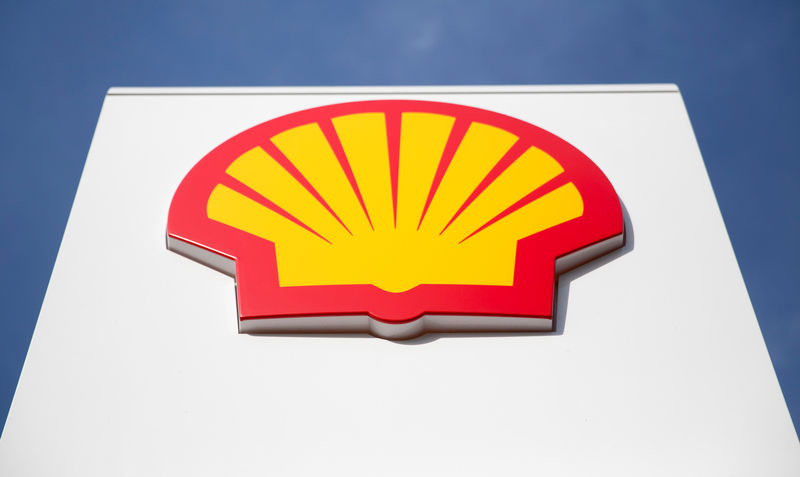 © Reuters. FILE PHOTO: A logo for Shell is seen on a garage forecourt in central London
© Reuters. FILE PHOTO: A logo for Shell is seen on a garage forecourt in central LondonBy Jessica Jaganathan and Julie Gordon
SINGAPORE/VANCOUVER (Reuters) – A massive liquefied export project in Canada has been given the final go-ahead from project partners, LNG Canada said on Tuesday, making it the first major new LNG project to win approval globally in five years.
First gas from the project is expected before 2025, aiming to feed an expected surge in demand for the cleaner fuel from hungry Asian buyers, mainly China.
LNG Canada is the single largest infrastructure investment in Canadian history and its construction provides a much needed boost for Prime Minister Justin Trudeau’s ruling Liberals, who have struggled with an exodus of global majors from Alberta’s oil sands and a series of setbacks in building a crude pipeline expansion to Canada’s West Coast.
The project will allow LNG to be shipped to Asian markets far faster than from the U.S. Gulf Coast.
Stakeholders Royal Dutch Shell (L:), Malaysia’s Petroliam Nasional Bhd (), PetroChina Co Ltd (SS:), Korea Gas Corp (KS:) and Japan’s Mitsubishi Corp (T:) have given final investment decisions, LNG Canada said on its website.
Shell said construction of the project at Kitimat in British Colombia will start immediately, with first LNG expected before the middle of next decade.
Mitsubishi said the total estimated development cost of the planned Kitimat LNG plant is about US$14 billion. Earlier estimates of the total cost of the project had put it at about C$40 billion ($31 billion).
Shell said the project will initially export LNG from two processing units or trains totaling 14 million tonnes per annum, with the potential to expand to four trains in the future.
PetroChina and Kogas approved project financing late last week while Shell, Petronas and Mitsubishi made their announcements on Tuesday.
RISING APPETITE
LNG Canada is the first large-scale conventional greenfield LNG project to reach a final investment decision (FID) since 2013, said Saul Kavonic, director for Asia Pacific markets and head of energy research at Credit Suisse (SIX:) in Australia.
“We see that LNG Canada’s FID would signal the appetite to invest in LNG is back,” Kavonic said.
The project owners will be responsible for providing their own natural gas supply and will individually offtake and market their share of LNG, LNG Canada said in the statement. In the past, project owners typically relied on long-term sale and purchase agreements with end-users to underpin financing.
The construction decision also comes amid a Sino-U.S. trade spat that has led to tariffs being imposed by China on LNG shipments from the United States, threatening U.S. President Donald Trump’s energy dominance plan.
Energy consultancy Wood MacKenzie said it appeared the project partners had pushed hard to reach an investment decision, with rival projects being progressed in Qatar, Russia, Mozambique and the United States.
“I don’t see it as a case of replacing U.S. cargoes, more about meeting projected demand growth,” said Wood Mackenzie analyst Nicholas Browne.
WoodMac expects global LNG demand to grow from 290 million tonnes in 2017 to nearly 450 million tonnes in 2025.
“That equates to a phenomenal 50 percent growth. So there is certainly demand for new LNG,” said Browne.
Source: Investing.com





























